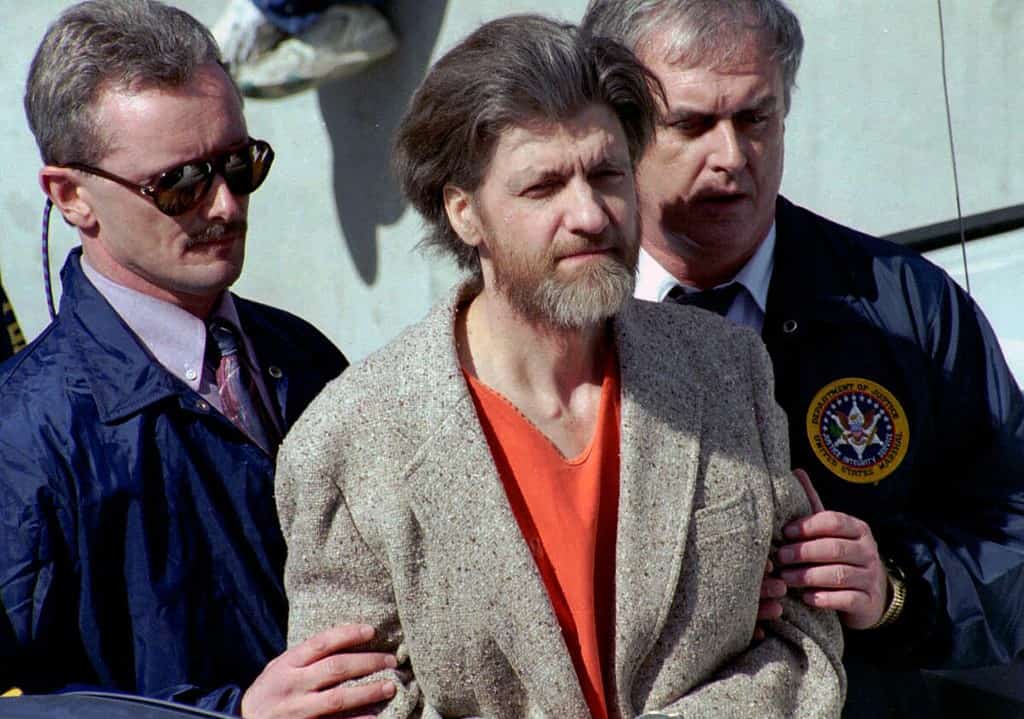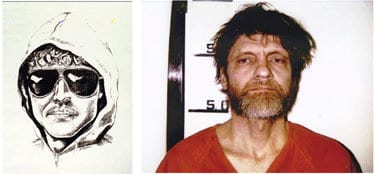
Credit: John Youngbear / Associated Press.
“Eco-terrorist extraordinaire Ted Kaczynski dies in U.S. prison aged 81” reads a 2023 headline you may have seen before in one form or another. Invariably, Kaczynski, famously known under his ‘Unabomber’ moniker, is associated with the idea of eco-terrorism, a label that sounds pretty straightforward but which, under more intense scrutiny, doesn’t make much sense. We’ll see why in a minute.
But did Kaczynski really blow people up due to a twisted sense that he was saving the planet? Sean Fleming, a researcher at the School of Politics and International Relations at the University of Nottingham, recently published a study that puts Kaczynski’s ideology under new light. Using what Fleming calls a “forensic ideology analysis”, the study found that Fleming’s motivations to engage in terrorist activities were not pro-environment but rather anti-technology.
Who was the Unabomber?

Between 1978 and 1995, Kaczynski, a former mathematics professor with a Harvard education, conducted a nationwide bombing campaign against people he believed were advancing modern technology and the destruction of the environment, which he argued in his writings was detrimental to human freedom and dignity. Most of his targets comprised scientists and academics, but he also set off bombs in computer stores. His attacks killed three people and gravely injured 23 others.
Kaczynski’s life before his infamous campaign was marked by early academic success and a rapid ascent through the educational system, culminating in becoming the youngest assistant professor at the University of California, Berkeley, at age 25. However, he abruptly resigned two years later, retreating to a remote cabin in Montana without electricity or running water, where he lived a minimalist lifestyle. It was from this seclusion that he began his bombing campaign, targeting individuals involved in technological development and industrialization, including academics, airline executives, and computer store owners.
The context of Kaczynski’s actions can be partially traced to the intense industrial and technological growth of the 20th century, which, while driving unprecedented economic development and advancements in living standards, also raised concerns about environmental degradation, social alienation, and the erosion of individual autonomy in the face of large, complex technological systems. Kaczynski’s 35,000-word manifesto, “Industrial Society and Its Future,” also known as the Unabomber Manifesto, published in major newspapers in 1995 under threat of further violence, articulated these themes. He argued that the human race was becoming increasingly dependent on technology, leading to a host of social and psychological issues, including a loss of freedom.
The FBI’s manhunt for the Unabomber was one of the longest and most expensive in U.S. history. He was captured in 1996 only after his brother recognized his writing style in the manifesto and alerted authorities.
Forensic Ideology Analysis
Kaczynski’s murder streak stands in stark contrast to the non-violent ethos of the environmental movement. Critics of environmentalism will often conjure the specter of the Unabomber to somehow discredit the entire movement. Yet, labeling Kaczynski as an eco-terrorist oversimplifies his motivations and obscures the nuanced debate about the role of violence in activism in general.
Fleming thoroughly analyzed Ted Kaczynski’s actions and ideologies, drawing from forensic psychology, environmental philosophy, and historical context. This approach involves a detailed examination of Kaczynski’s writings, including his manifesto, personal journals, and correspondence, alongside a review of secondary literature on eco-terrorism, radical environmentalism, and technological critique.
This analysis reveals a man not driven by a love for the environment but by a deep-seated hatred for technology’s impact on society. Unlike the eco-centric activism that champions biodiversity and the intrinsic value of nature, Kaczynski’s manifesto offers a critique rooted in a fear of technological domination.
Kaczynski’s actions, under the guise of fighting against the destruction of nature, actually reflect a deeper, more personal war against the technological system itself, Fleming writes.
“What, then, was Kaczynski’s relationship with environmentalism? The null hypothesis — that there was no relationship — does not stand up to the archival evidence. However, Kaczynski defies the three eco-ideological labels that are commonly applied to him. His ideology displays only weak morphological affinities with radical environmentalism, green anarchism, and right-wing ecologism, and it has only weak intellectual-historical connections to the environmental tradition,” Fleming wrote in a paper published in the American Political Science Review.
“With the lone exception of “wild nature,” none of his core concepts or even peripheral concepts are derived from environmentalist sources. Kaczynski’s ideology might be considered a second or third cousin of environmentalism, because it does have some common intellectual lineage, but its conceptual structure and motivating concerns are fundamentally different.
Furthermore, Fleming adds that Kaczynski was obviously deranged.
“There is little doubt that Kaczynski suffered from mental illness. He sought help for depression, anxiety, and insomnia from Montana Mental Health Services on multiple occasions between 1988 and 1993.”
Reflecting on environmental activism and the labels
The discourse surrounding Ted Kaczynski’s legacy urges a broader reflection on the nature of activism and the role of violence within it. While it’s true that some radical environmental activists may perform extreme acts of protest that may involve the destruction of property, calling it eco-terrorism is a huge stretch.
What people commonly refer to as “eco-terrorism” — typically in the context of some sabotage — is a misnomer for what’s more accurately termed “ecotage”. Terrorism by definition involves violence that leads to or threatens the loss of human life. Throughout history, the only person connected with so-called “eco-terrorism” that has caused fatalities is the Unabomber. However, as this analysis shows, the ideologies and motivations behind his vile calculated murders had little to do with the environment, which was more of a second-order priority in his twisted value system.
As the only person linked to ‘eco-terrorism’ with confirmed murders under his name, perhaps it’s time to finally drop this label for good. What then should we call Kaczynski? He was simply a bona fide terrorist. That label suffices.
